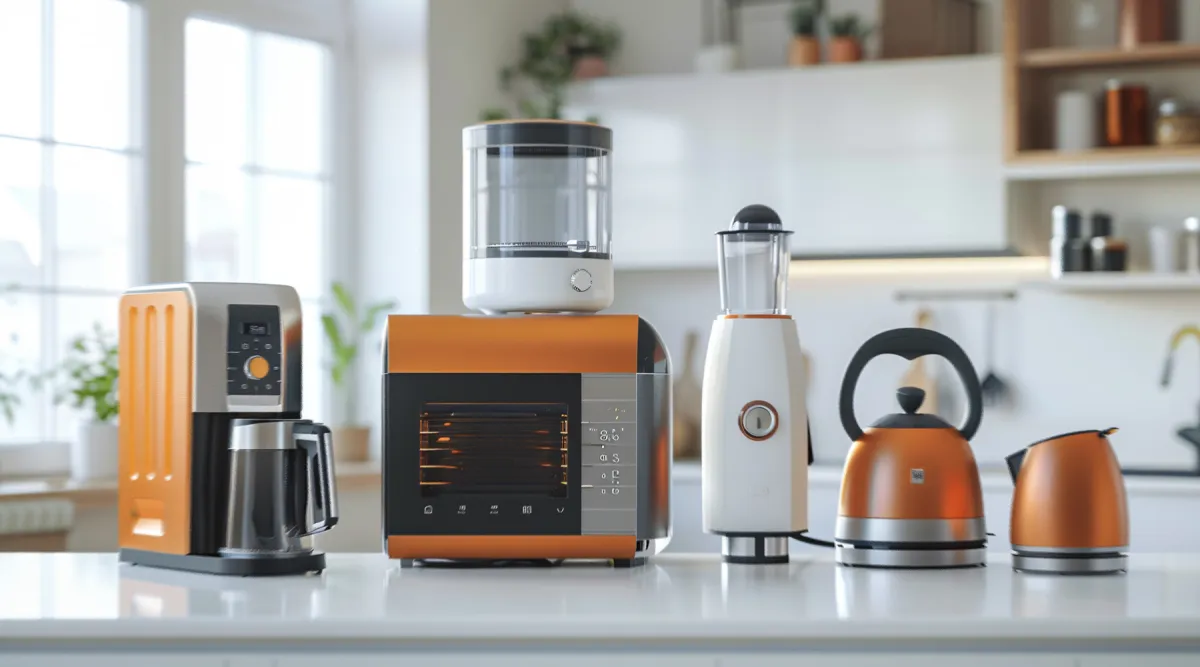Why Click, Buy, and Deliver is the Future of India’s Home Appliance Market?
India’s home appliances market is shifting online, with e-commerce poised to hit 40% by 2029. Discover key trends, premiumization, and the digital disruption reshaping the industry.

Imagine this, A young, middle-class couple in Bangalore just moved into their first apartment. They have a budget, they want energy-efficient appliances, and they expect doorstep delivery with zero friction. Where are they shopping? Not in a traditional store. They’re scrolling through their phones, comparing features, prices, and reviews—clicking ‘Buy Now’ on the go.
Welcome to the future of India’s home appliances market—a space projected to hit USD 80 billion by 2029, growing at a CAGR of 6.5%. And yet, despite its size, this industry is still warming up to the digital revolution.
A Sleeping Giant in E-Commerce
For years, home appliances in India were a showroom business. People walked into a Croma or a multi-brand retailer, haggled for discounts, and got their fridge or washing machine delivered a few days later. That model still dominates, with 40% of sales happening through multi-brand stores and another 30% through exclusive outlets.
But the winds are shifting. Online sales now account for 20% of the market, and that number is growing fast. Investors, C-level executives, and D2C strategists should be asking themselves: Why aren’t we capitalizing on this shift faster?
Here’s what’s happening:
- Tier-2 and Tier-3 cities are fueling e-commerce adoption. Smartphone penetration is exploding, logistics are improving, and consumers are becoming more comfortable ordering high-ticket items online.
- Consumers demand convenience After all, who wants to spend an entire Saturday hopping between showrooms when they can compare models and financing options in minutes online?
- Price transparency is non-negotiable because buyers can now check Amazon, Flipkart, and Tata Cliq before considering a local retailer. Brands that aren’t offering competitive pricing and instant gratification risk losing relevance.
With digital shopping rising and Tier-2 and Tier-3 cities driving adoption, the real question is can online go from 20% to 40% by 2029?
The Next Battle is Premiumization vs. Price Wars
While affordability has driven the market so far, India’s growing middle class is pushing brands toward premiumization. Consumers aren’t just buying washing machines—they’re investing in Wi-Fi-enabled, AI-driven, energy-efficient smart washers.
Consider this:
- India’s disposable income has grown from INR 156 Mn in 2016 to INR 239 Mn in 2021—a clear indicator that people are willing to spend more on quality.
- Premium brands like Samsung, LG, and Haier already command 6%, 5%, and 5% of the market, respectively, but they face stiff competition from affordable disruptors.
- Energy efficiency is a game-changer. With power consumption per capita crossing 1255 KWH in 2022, people are actively choosing appliances that cut down their electricity bills.
This creates a classic David vs. Goliath scenario: do brands double down on innovation and premium features, or do they fight in the trenches of price wars?
The Playbook for the Next 5 Years
If you’re a decision-maker in this space, here’s what you need to focus on:
- Crack the Online Experience If e-commerce is already 20% of sales, how can we push it to 40%? Invest in D2C channels, optimize the mobile buying experience, and offer competitive financing.
- Bet Big on Smart Tech & Energy Efficiency, This isn’t just about appliances; it’s about solving real-world problems like rising electricity costs and sustainability. Government-backed energy initiatives will reward brands that take this seriously.
- Fix the Post-Sale Experience whoever masters seamless, hassle-free servicing will have a loyal customer base—and loyalty is a game-changer in a fragmented market.
Are We Ready for the Next Big Disruption?
The India home appliances market isn’t just a consumer story—it’s an e-commerce goldmine waiting to be tapped. For investors, there’s an untapped digital sales explosion. For brands, there’s a once-in-a-decade opportunity to redefine the buying experience.
The only question is: Who’s going to lead the charge? For deeper insights, proprietary data, and expert forecasts, get in touch with Ken research. Let’s navigate the future of home appliances together.


